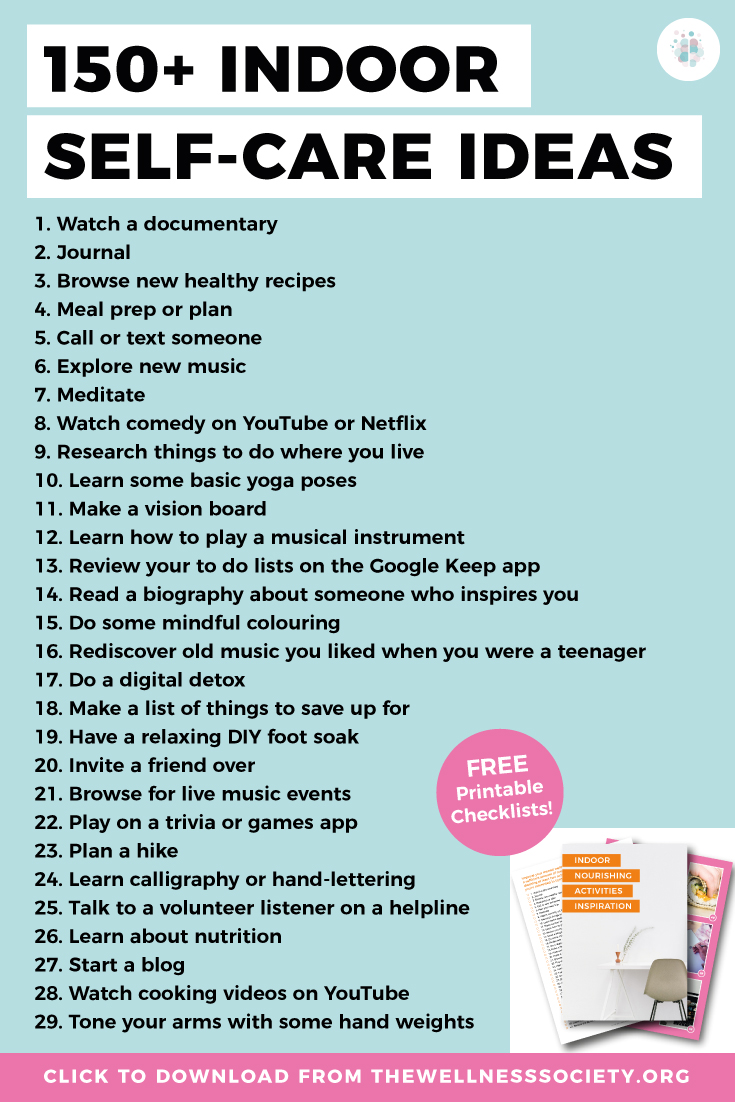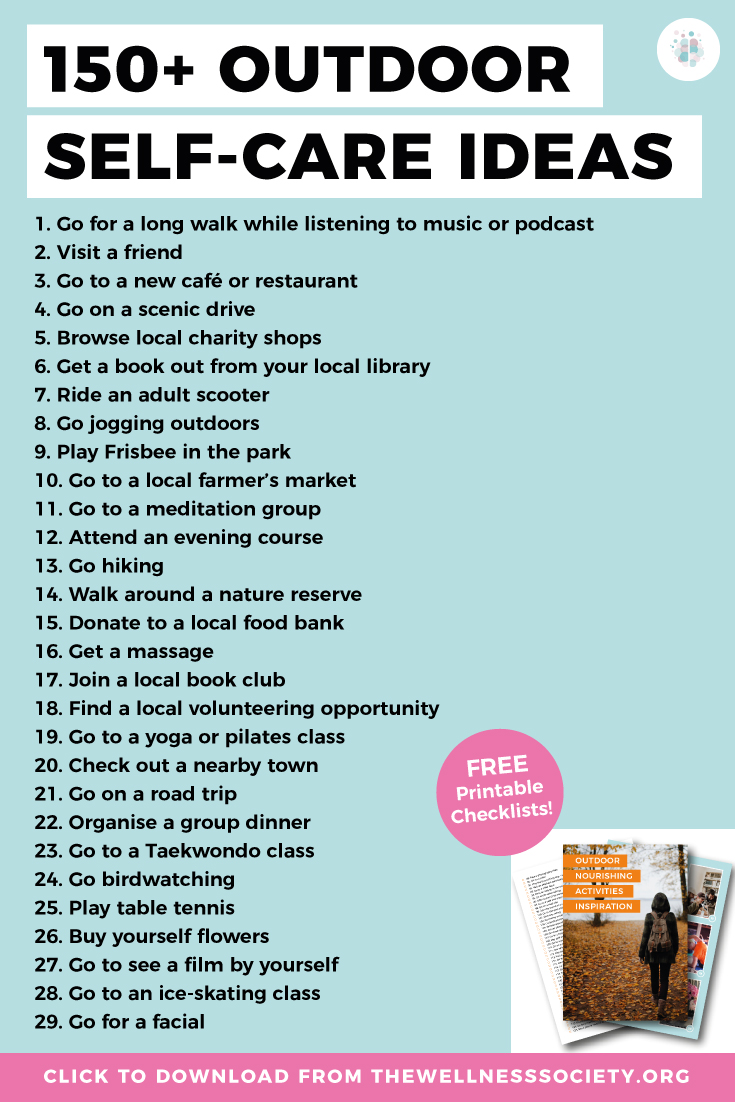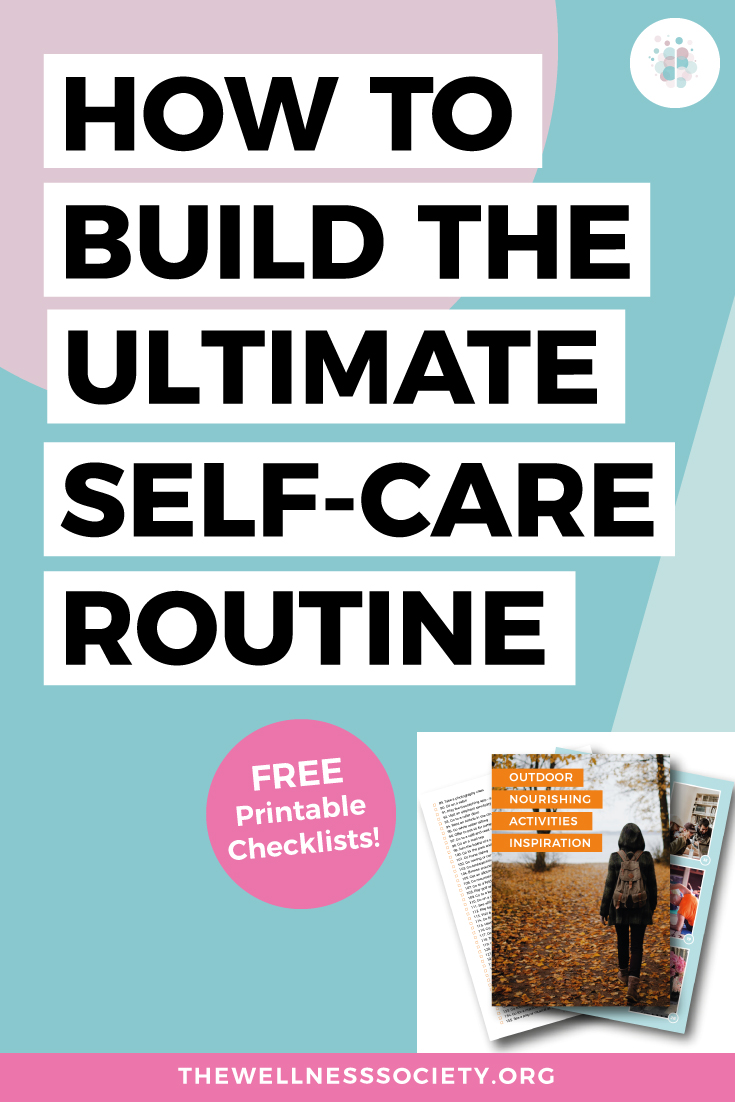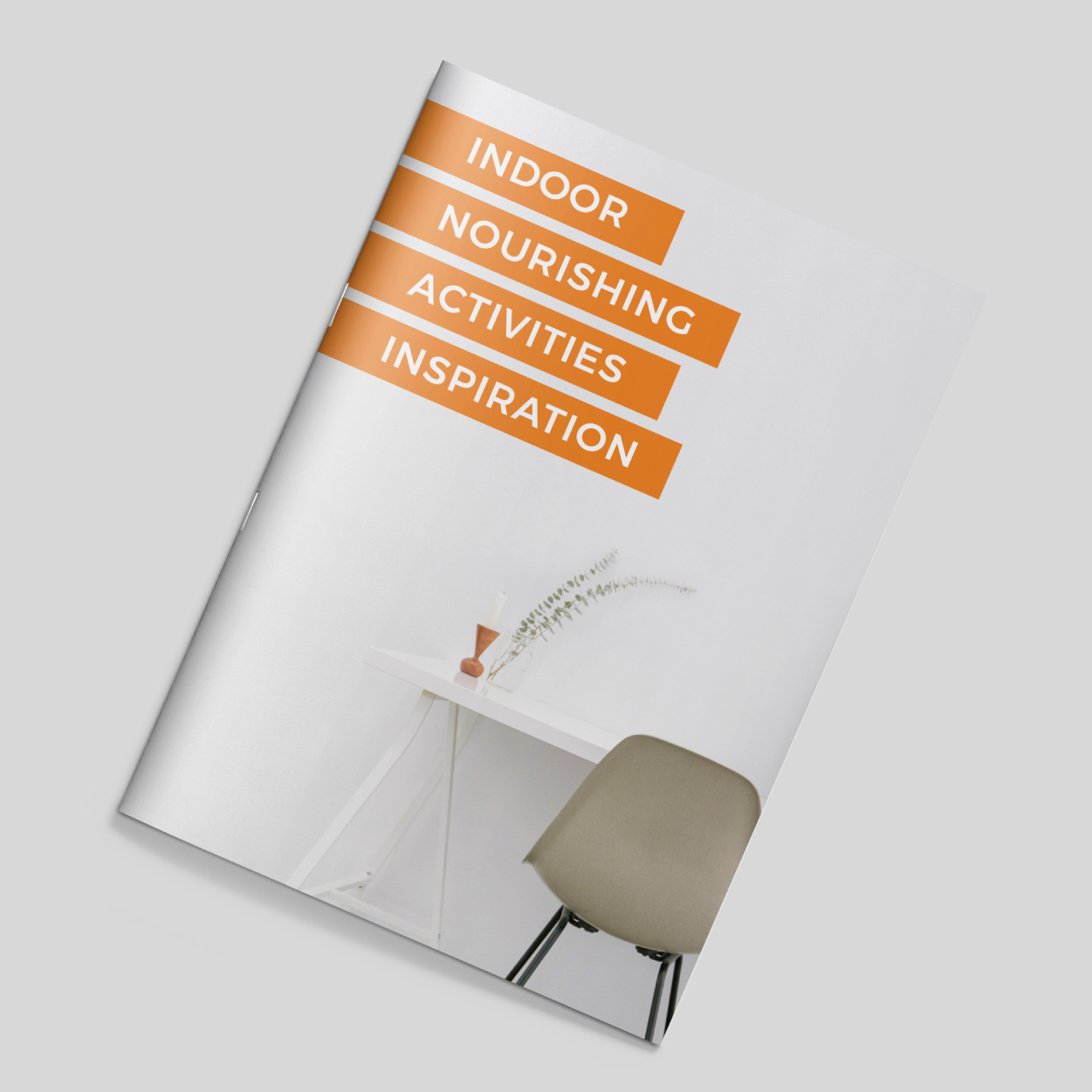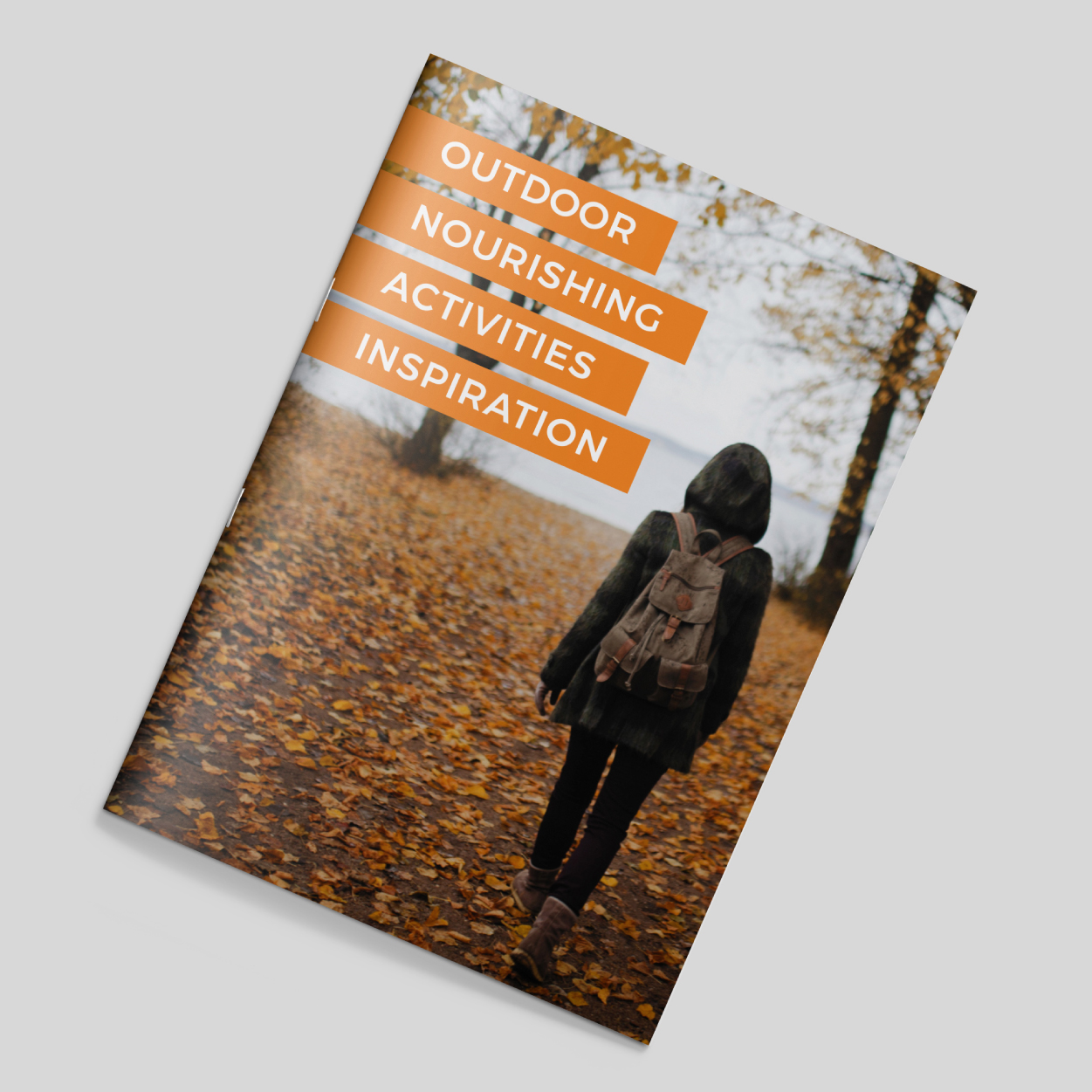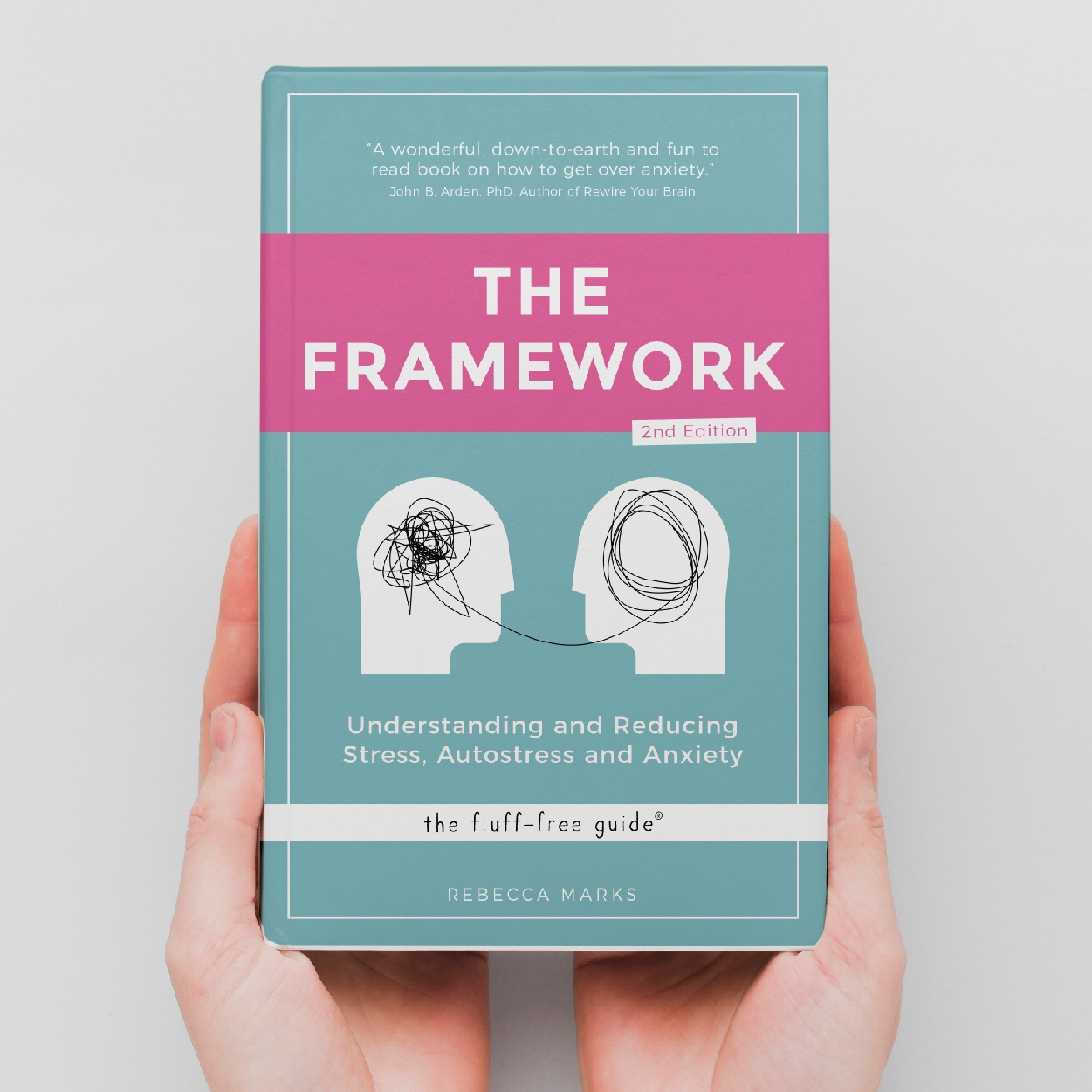People are confused about what “self-care” actually means these days.
It’s a huge buzzword on social media, but it doesn’t have to be anything big or overwhelming!
Self-care is simply any activity you do with intention to take care of your mental and physical health.
It doesn’t mean taking a monthly spa trip or meditating for an hour each day.
Self-care is all about making small adjustments to your routine - adjustments which help you feel better and function at your best.
Along with reading this article, be sure to check out our Indoor and Outdoor Nourishing Activities Checklists from our Free Tools Library for plenty of self-care inspiration!
Put Your Own Oxygen Mask On
“Caring for myself is not self-indulgence, it is self-preservation.” – Audre Lorde
A great analogy for self-care is the oxygen mask from the inflight safety demonstration: "Please put on your own oxygen mask before helping others”.
Why? Because if you’ve passed out, you’re of no use to anyone else!
Self-care is about making sure that the best version of yourself is out there to achieve what you want to in life and to help others live their best life too.
Perhaps you often forget to put yourself first. To help others effectively and for the long-term, it's all about nurturing your own growth and wellbeing.
Some signs you’d benefit from more self-care include:
- Low mood
- Low energy
- Low motivation
Experiencing these?
Keep reading to learn some simple self-care habits for the mind, body and soul.
Mind Self-Care: Discovering Your Nourishing Activities
When it comes to self-care, it needs to be on your own terms.
Different things work for different people.
So often we go through life on autopilot and do the things for our wellbeing that we think we ‘should’ be doing.
A good mantra for self-care is therefore: “you do you”.
You need to enjoy the time you dedicate to self-care. You need to be able to want to make the time and space for it. So, it’s important to "find your thing" - the activities that truly lift, calm or energise you.
As mentioned, be sure to download our free Indoor and Outdoor Nourishing Activities Checklists for inspiration!
You can also reflect on the following questions and make some notes in a notebook or journal:
- What are the things that soothe and recharge me?
- How can I incorporate them into my daily and weekly routines?
Not sure?
Another approach is an experiment. For seven days, make a note in your phone whenever you’re feeling content, energised or calm. Note down what you’re doing, and review these activities at the end of the week. Then, focus on building more of these activities into your life.
It’s vital to make the most of the time when you’re not working, dealing with family commitments and generally getting stuff done.
By prioritising self-care and the things you love to do, you’ll feel more energised and recharged. If you don't know where to start, consider something as basic as going for a walk, listening to music, or playing a simple game of backgammon online.
Body Self-Care: Bringing More Movement into Your Life
With today’s sedentary lifestyles, the average person spends about 55 hours a week sitting down.
A great way to boost your energy levels and nourish your body is to make sure you move regularly throughout the day.
Think about how you can build more movement into your life:
- Take the stairs rather than the lift
- Get off the bus a stop earlier on your daily commute or walk to work
- Wander the room while chatting on the phone
- Park at the far corner of car parks rather than close to entrances so you get more steps in
- Go for weekend Awe Walks in nature (download our Ecotherapy Workbook to learn more!)
Using a FitBit or the NHS Active 10 Walk Tracker app (Apple link, Google Play link) can help you monitor your progress and boost your motivation to move.
Soul Self-Care: Practicing Mindfulness
Mindfulness is about connecting to your five senses instead of being lost in your inner dialogue.
To practice a mindfulness activity, sit somewhere nice and quiet and take some slow, light breaths in and out through your nose. Sit comfortably and notice:
- 5 things you can see
- 4 things you can hear
- 3 things you can touch
- 2 things you can smell
- 1 thing you can taste
Then, take a few moments to think about each of these, why they’re important to you and which feelings they evoke.
Summary
Having a strong self-care routine helps promote a healthy mind and body.
It shouldn’t feel like yet another thing to put on your to-do list!
(If it does, it’s a sign you need to keep working on improving your self-care habits!)
Since life is becoming more and more hectic these days, please be gentle with yourself.
By building tiny habits each day, you can bring self-care into your life almost without noticing it, with the benefit to your mind and body being higher than you realise.
This book used to be on Amazon. Now it's free!
More Popular Articles
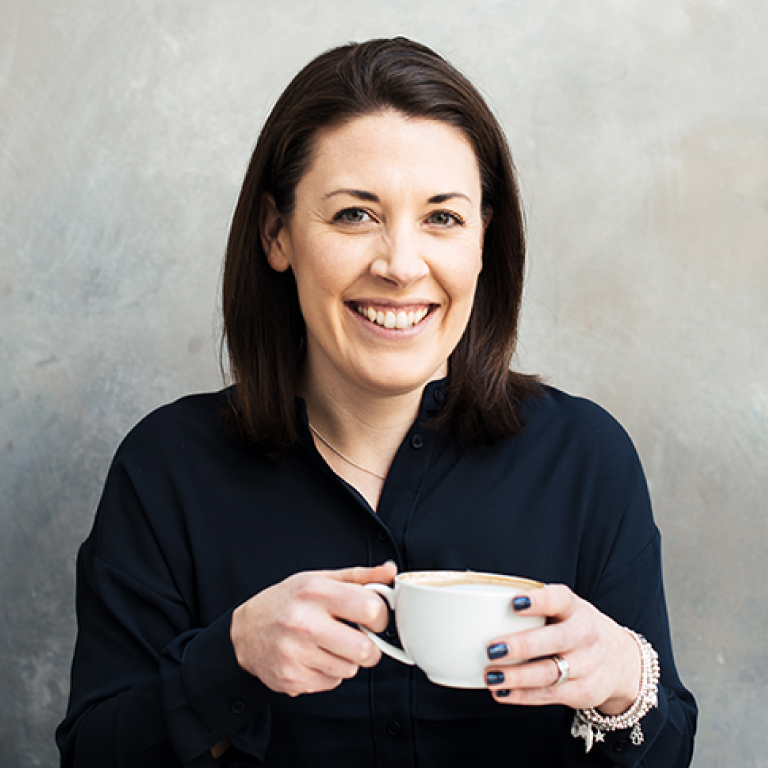
About Rachel
I'm a positive mindset and wellbeing coach, working with individuals and corporate teams. Having had a very successful 13 year career in senior position in the produce industry, I have experience in growing businesses and managing operational success. I share strategies for self care and positive mindset so my clients can achieve their goals and grow their businesses in a calm and nourishing way, so they’re not burnt out doing it. I write regularly on the power of bringing self care into your day to day life in the Self Care Survival Kit newsletter and released the book Self Care for the Seasons in November 2020.Website: rachelletham.com
Instagram: instagram.com/rachelletham
Self-care shop: Self-care Survival Kit Shop
Pin For Later
